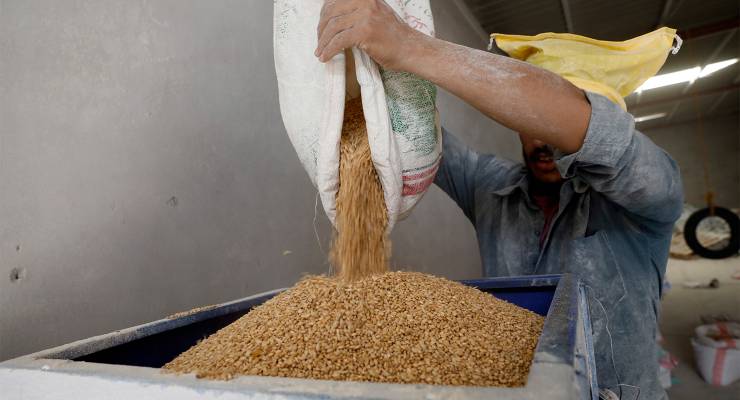
The world is facing a hunger crisis. Food shortages brought on by COVID-19 supply chain disruptions, climate change and Russia’s invasion of Ukraine have caused prices to skyrocket; the food price index reached record highs in March this year.
The number of severely food-insecure people doubled from 135 million to 276 million at the start of this year. In 2023, 19 million people are expected to face undernourishment.
It’s also a crisis that donations alone can’t solve: while developed countries’ goodwill flounders with export bans driving up prices to unaffordable levels, and while food wastage is at unfathomable highs, the crisis isn’t down to a lack of generosity but a lack of strategic planning.
The factors at play
Food insecurity comes down to the three Cs, Australian Council for International Development humanitarian policy and advocacy adviser Natasha Chabbra told Crikey: COVID-19, climate change and conflicts.
“These have destabilised countries and impacted the abilities for communities to actually have stable livelihoods and provide for their own families,” she said.
COVID affected supply chains and household incomes. Climate change has affected crops around the world, and Russia’s invasion of Ukraine has directly driven up food costs. Russia is one of the biggest exporters of phosphate fertiliser and exported 17% of all wheat sold across national borders, with countries scrambling to find new markets. Ukraine produced 6% of all food calories traded in the international market, with Russia blockading the country’s ports.
The countries most affected by the food crisis, Chabbra said, are Afghanistan, Syria and Yemen, as well as the Horn of Africa.
Food would be scarce anyway
But even if COVID never happened and the world was suddenly at peace, food supply would still be a concern, director of the ANU Institute for Climate, Energy and Disaster Solutions Professor Mark Howden said.
“There’s a long-term trend downwards, in terms of productivity growth … While we’re not going backwards, we’re not going up in production as fast as we otherwise would be,” he said.
Much of this is caused by climate change, he said, but also reduced investment in research and development in the agriculture sector that drives innovation — a crucial element when responding to climate change.
Finally, the world lacks any significant food safety net. Globally we’re terrible at storing food: one-third of food produced for human consumption is lost or wasted. While developed nations throw away tonnes of food annually, developing nations also struggle with wastage, with 40% of food losses occurring before the food even reaches the market.
High inflation means countries are less likely to stockpile food too, Howden said: “Everyone is cost saving and food storage costs a lot, so we haven’t got the stocks that we would have had in the past.”
Not all down to donations
High food costs coupled with ongoing concerns of extreme weather have caused a number of countries to tighten their belts, University of Melbourne supply chain expert Medo Pournader said.
“China started hoarding crops and food items even before the war because they were expecting a shortage,” she said.
“Many countries … have exerted export bans on their basic food products because they’re scared that there will be issues around transport and supply chains.”
Export bans can drive up food prices, which affects developing nations and causes an imbalance in inventory distribution, she said.
While reducing export bans would help ease the immediate supply problems and price rises on certain goods, it’s not enough. NGOs always need cash to deliver food to impoverished areas, but this will only go so far in the face of a global crisis. Nations also need to start investing in — and sharing — agricultural technology, looking at how to store food instead of throwing it away, and taking meaningful action to combat climate change.








“There’s a long-term trend downwards, in terms of productivity growth.”
How realistic is it to assume agricultural productivity will just go on growing forever?
Fantastic news. Since COVID 19 didn’t live up the early pandemic predictions of reducing the planet’s overpopulation problem, hopefully this may be another bite of the cherry to reduce the world’s population growth by 19 million p.a. or better as a panacea to the world ignoring human induced climate change.
Good article and highlighting recipient nations (vs. Anglosphere – Russian noise), could add all MENA Middle East North Africa, which are ignored and/or mute on Russia’s invasion of Ukraine, for their own reasons.
On those nations listed and MENA, a related issue is governance, transparency and genuine care for their people for a functioning society, and solutions for grain imports whether substitution, new suppliers or subsidy/aid support.
In addition to the leadership of the same nations applying some pressure on Putin to allow and facilitate exports of Ukraine’s grain by ship (rail via west is limited), includes Erdogan’s Turkey and not passively accepting potential famine, societal breakdown etc.
Somebody’s screwed up the transcription of the Langley VA telex – “Russia … exported 17% of all wheat sold across national borders, with countries scrambling to find new markets“?!
Was that meant to be sources. due to the US proclaiming 3rd & 4th party embargoes?
Similarly with energy, coercing countries previously buying Russian oil being forced to buy US wheat & gas at twice or more the cost from neighbouring Russian.
This entire Ukraine farrago is almost over and the one foodstuff that is not in short supply is the egg all over the faces of the usual paid propagandists and ASPI/FDD expert lobbyists.
Congrats on the Walkley. Well deserved.